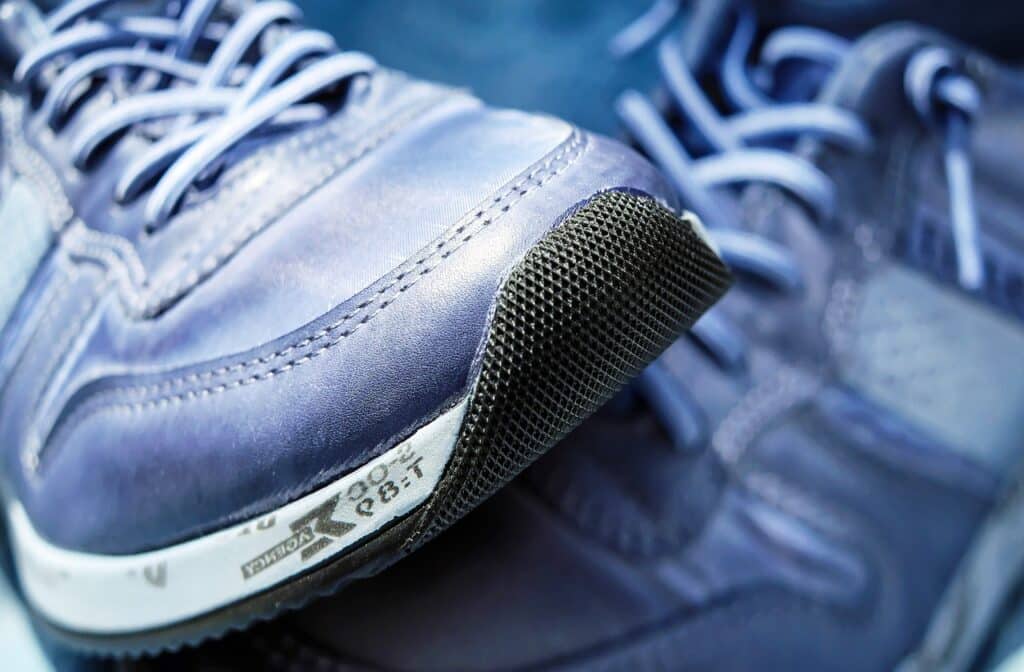
We know what they cost and we also know that constant innovation in the field of slippers They make them much more durable and practically free from breakage and unstitching. Nevertheless they can't be perennial. A smooth sole, a bad drawing of the sole or a hole that we do not have can make our tread not be correct and lead to joint and muscle problems seriously.
Given this, the big question: Every how many kilometers do I retire my shoes? We have the answer, and as in everything, it depends on each use and each person.
The cushioning, key
The main problem that a pair of shoes offers when changing them is that in a large percentage they do not usually show symptoms of being in poor condition. What we can intuit as a slight wear, a loss of color or a scratch can mean a significant deficit in cushioning, and I get a lot of muscle discomfort.
And it is that the shoes are in charge of making the floor friendly for us. With each step, our feet are in charge of contacting all types of pavement, and the shoes are the ones that should break the fall. In each shoot, support and adherence to the ground will be vital.
Currently, thanks to systems such as the Boost of Adidas or the Flyknit of Nike (To give examples), we have air chambers or sole designs only designed to adapt the footprint and that the impact against the ground is the least. Therefore, you are the judge, and the moment your support is not necessary, it is time to change them.
The increasingly thin midsole

When we warn that normally the most attractive part of the shoe is not what tells us its true state, we are not lying. And it is that if there is an area that offers us the truth about the useful life of our shoes, it is the midsole. What do we mean? To area located between the sole itself and the beginning of the fabric of the shoe.
This area will be in charge of the cushioning of the shoe, and as we give it kilometers, the friction makes it decrease. Because of this, we will reach moments where this area, generally made of polyurethane or other types of plastic, is so thin that it cannot properly cushion our stride.
Another big problem in this regard will occur when one shoe is more worn than the other, generating an unevenness that when running long distances can lead to spine or back problems. Therefore, monitoring the wear of the sole and midsole will determine the performance of your shoes.
Don't buy thick ones for this
We know that on many occasions saving is essential, but let's not go to the extreme. There will be more than one who, upon reading that the wear of the midsole is what measures the useful life of the shoe, has thought of buying the heaviest shoes with the thickest midsole on the market to extend their mileage. However, in these times, this is not a guarantee of success.
And it is that there is a great struggle in the manufacturers of shoes between shoes cushioned and minimalist. The cushioned ones will be the traditional running ones, thicker, while the minimalist ones are closer to the world of athletics, being lighter, thinner shoes and with less sole. To this, the coherent thing would be to think that the minimalist ones wear out before, but the advance of technology and the synthetic and plastic materials that form them, say the opposite. Fine quality sneakers are more worthwhile than simpler combat boots.
The figure: 1000km
Finally, it is time to reveal the number of kilometers in which you will have to stop by the sports store in search of other shoes. The experts talk about 1000km, a by no means short figure that will be ensured more than a year of shoes without problem. Entering factors such as the care we give to the shoes or the pavement on which we run, the truth is that the 1000 kilometers are situated as the total alert number in which a change is required.
Going economically, spending on mid-range shoes every year is not unreasonable, even more so if they have given you optimal performance and have prevented injuries. The really expensive thing is getting injured, so changing every year is life insurance.
Finally, a piece of advice: As we always indicate, the footprint is key, so when going for the new shoes, take the old pair with you to buy similar ones. They will know how to advise you, see the performance you have given it, and find the shoes that are most similar to you. Once you have bought the new ones, throw the old ones away or to go buy bread. The rest of practices with them will be a risk.